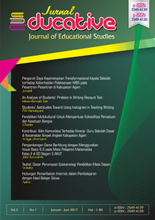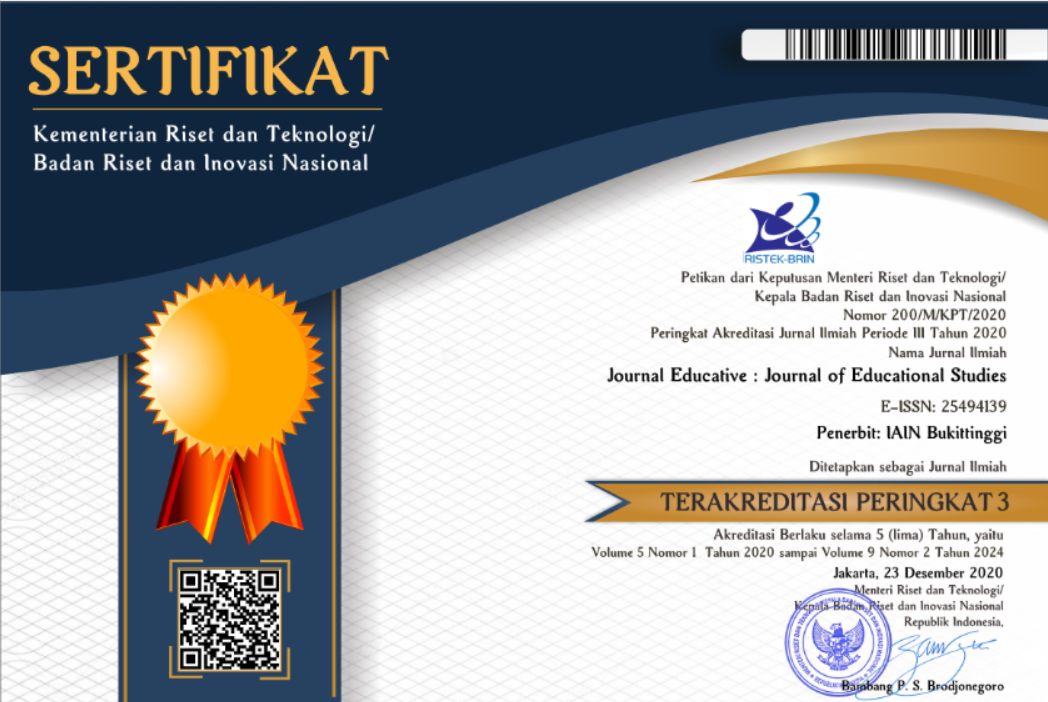Students’ Aattitudes Toward Using Instagram in Teaching Writing
DOI:
https://doi.org/10.30983/educative.v2i1.318Abstract
References
Abu-Rass, R. (2001). Integrating reading and writing for effective language teaching. English Teaching Forum, 39(1), 30-39.
Ali, Sebah Al. (2014). Embracing the selfie craze: exploring the possible use of instagram as a language mlearning tool. Issues and Trends in Educational Technology, 2, 1-16.
Alsamadani, H.A. (2010). The relationship between Saudi EFL students’ writing competence, L1 writing proficiency, and self-regulation. European Journal of Social Sciences, 16(1), 53-63
Boyd, D. (2014). It’s Complicated: The Social
Lives of Networked Teens. London, UK: Yale University Press.
Hu, Y., Manikonda, L., & Kambhampati, S.
(2016). What We Instagram: A First Analysis of Instagram Photo Content and User Types. Retrieved from http://149.169.27.83/instagram-icwsm.pdf
Mason, R. (2006). Learning technologies for
adult continuing education. Studies in Continuing Education, 28(2), 121-133.
Thurairaj, Saraswathy, Swagata Sinha Roy,
Kavitha Subaramaniam. (2012). Facebook and Twitter a platform to engage in a positive learning. International Conference On Application Of Information and Communication Technology and Statistics in Economy and Education (ICAICTSEE,)157-166.
Zhang, Lili. (2013). Mobile phone technology
engagement in EFL classroom. International Conference on Software and Computer Science (ICSECS),171-173.
Downloads
Published
How to Cite
Issue
Section
Citation Check
License
Authors who publish with this journal agree to the following terms:
1. Authors retain copyright and grant the journal right of first publication with the work simultaneously licensed under a Creative Commons Attribution License that allows others to share the work with an acknowledgment of the work's authorship and initial publication in this journal.
2. Authors are able to enter into separate, additional contractual arrangements for the non-exclusive distribution of the journal's published version of the work (e.g., post it to an institutional repository or publish it in a book), with an acknowledgment of its initial publication in this journal.
3. Authors are permitted and encouraged to post their work online (e.g., in institutional repositories or on their website) prior to and during the submission process, as it can lead to productive exchanges, as well as earlier and greater citation of published work (See The Effect of Open Access).




